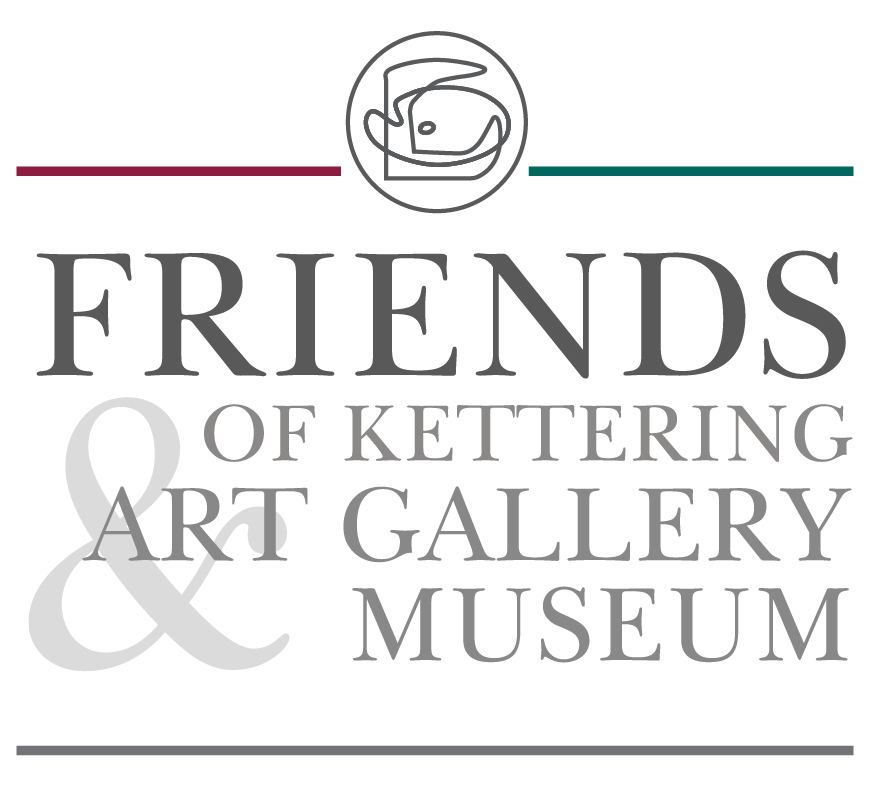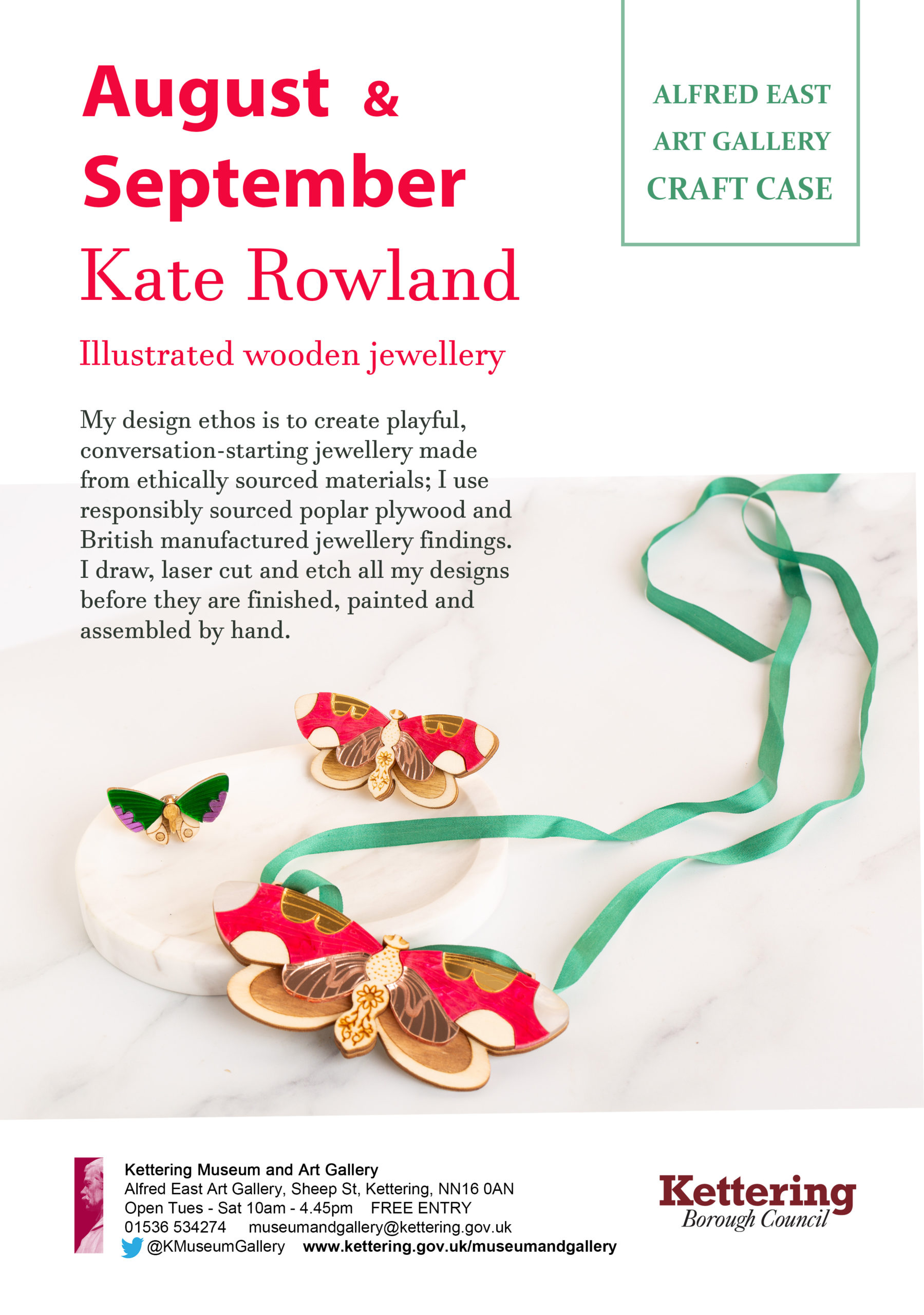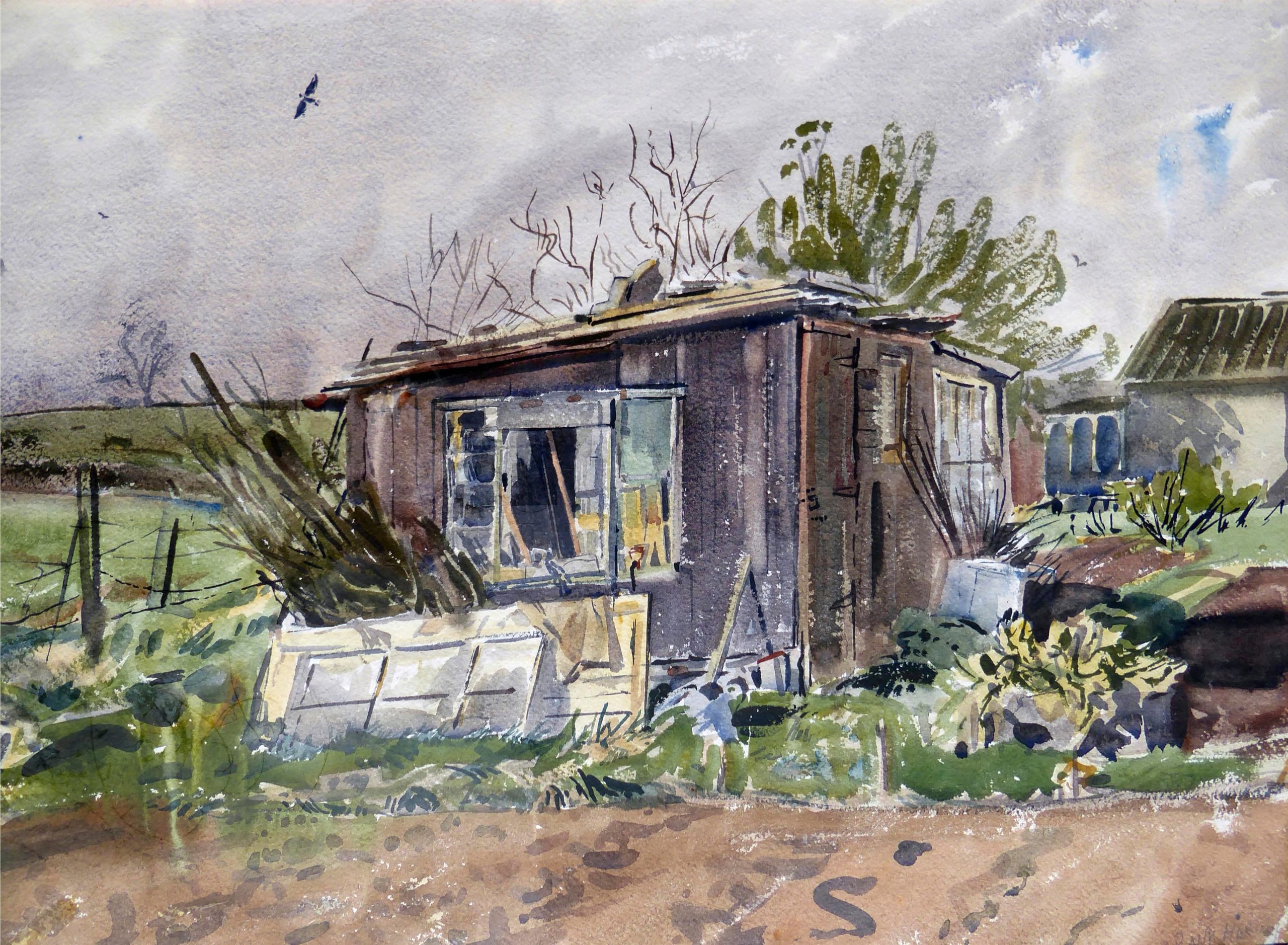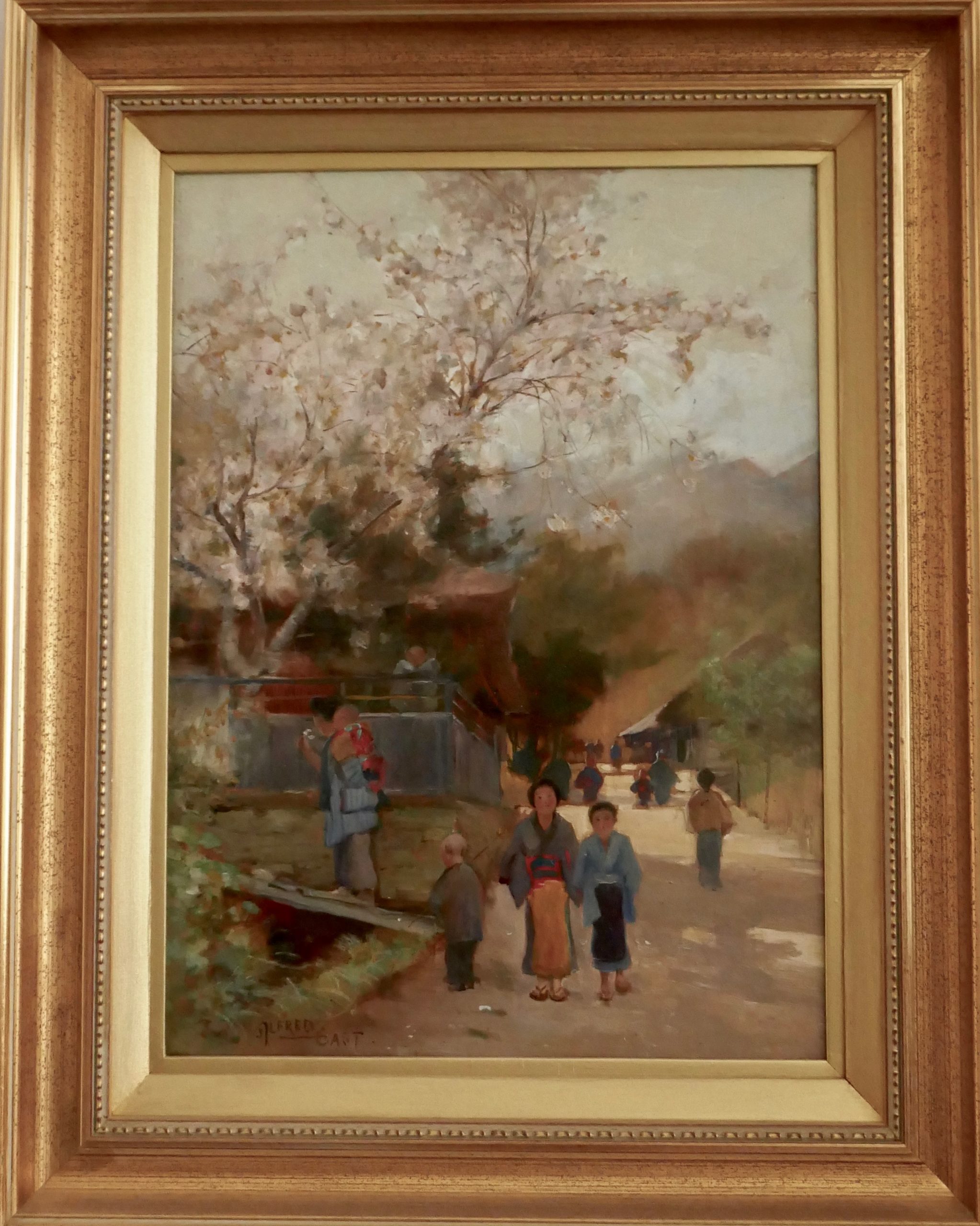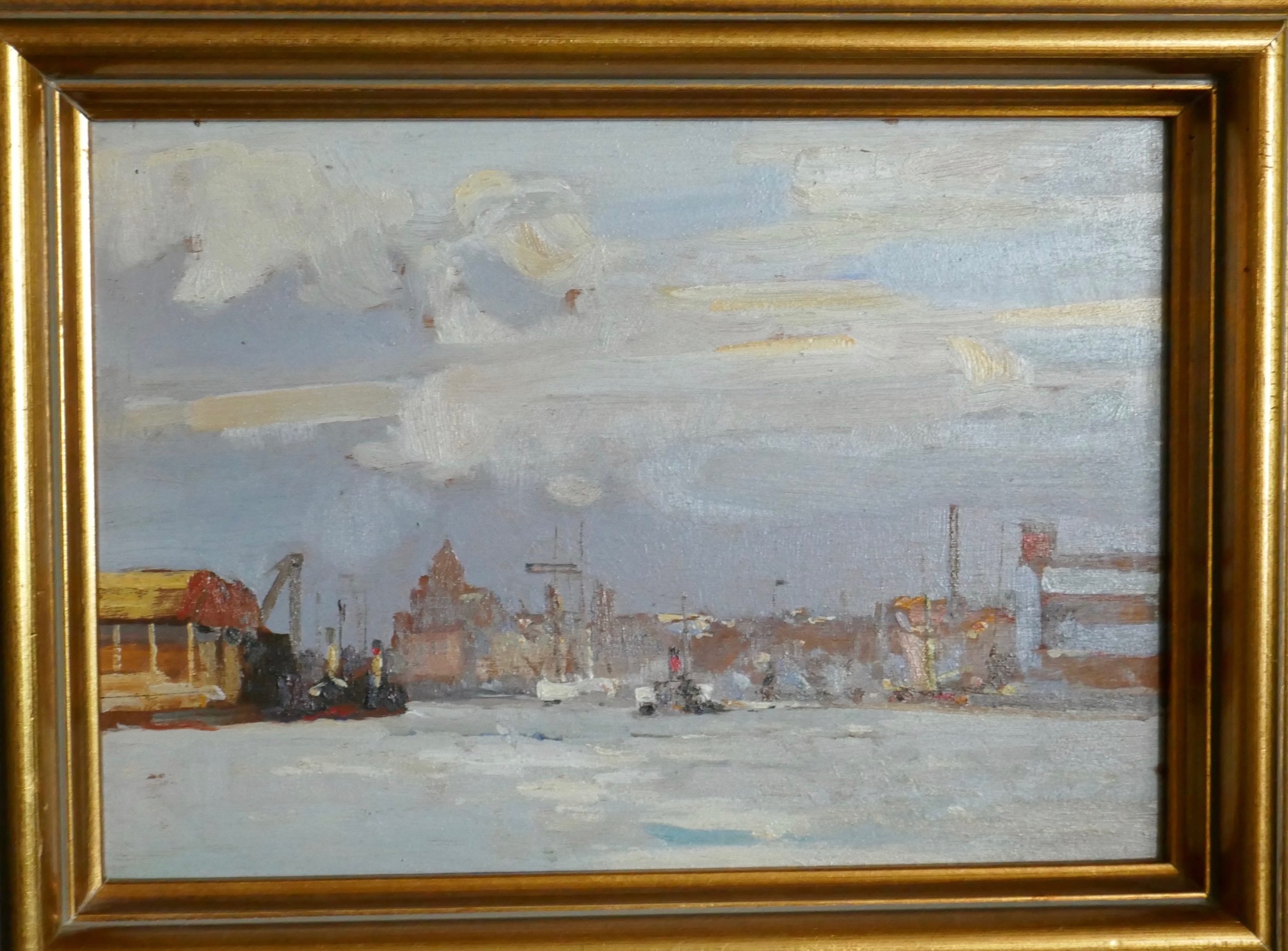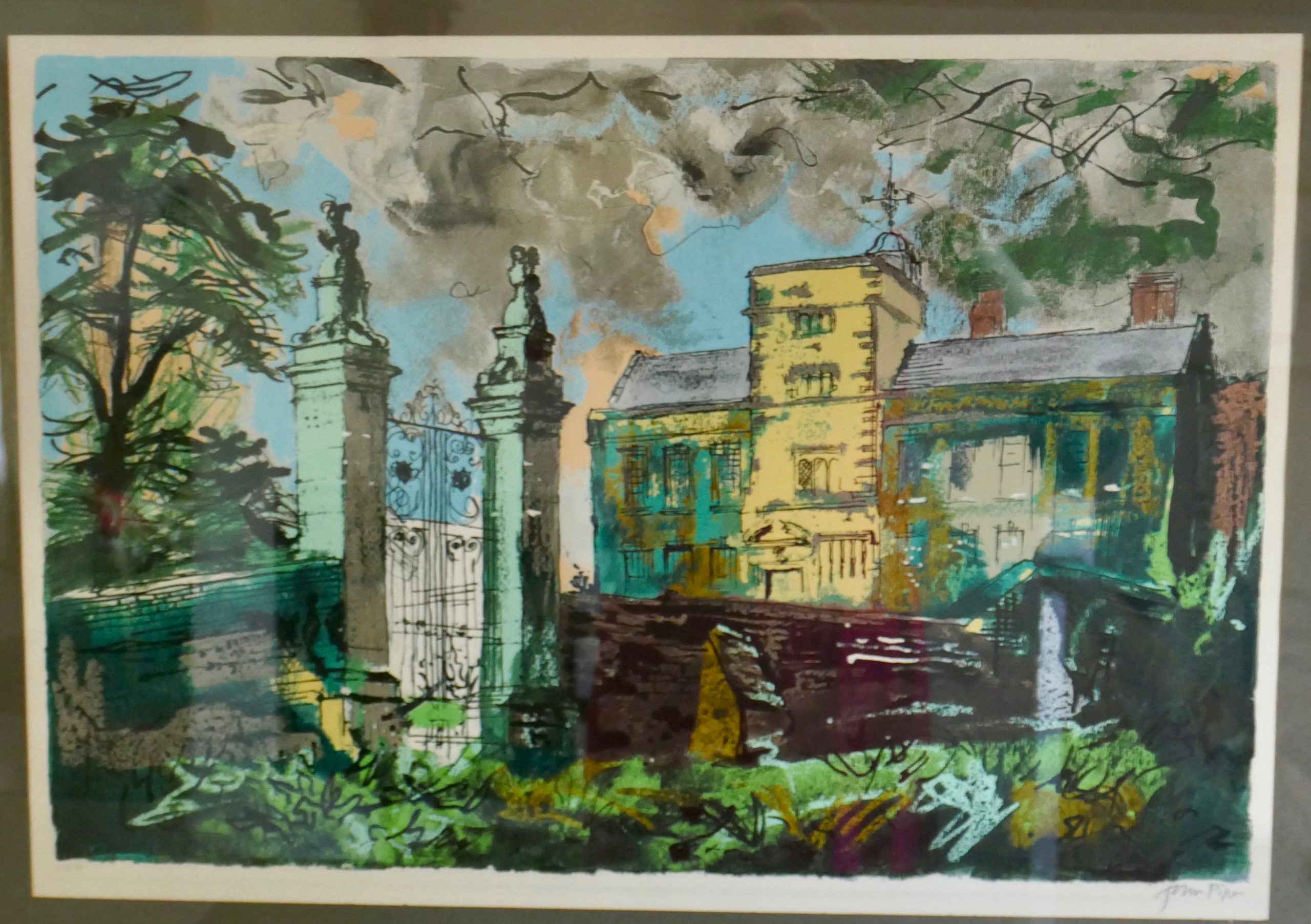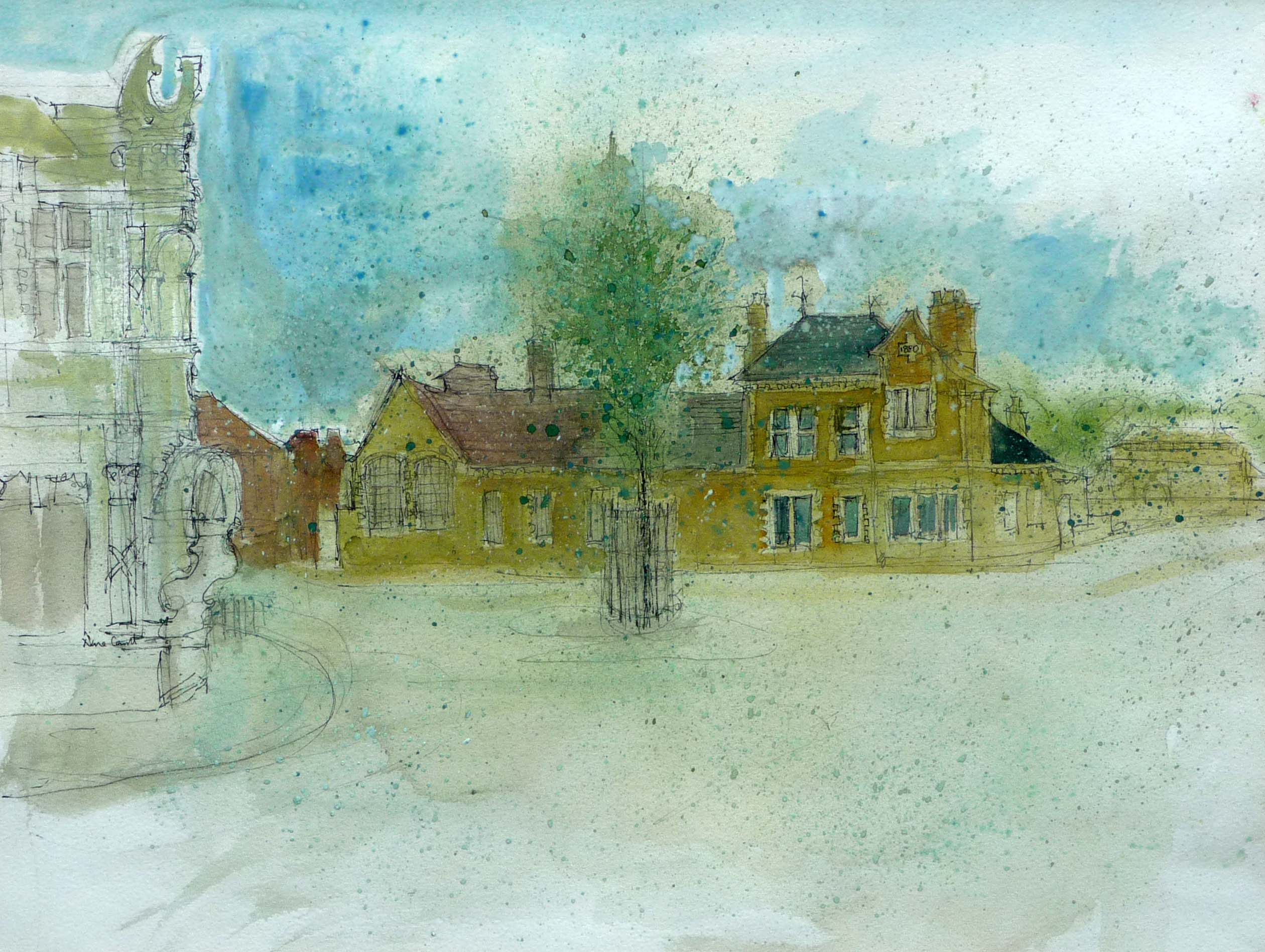When the Alfred East Gallery opens again on 11 August, you’ll be able to view Sue Lydia Taylor’s exhibition ‘People and Places’ until 2 October 2020.
 Friends of KAGAM
Friends of KAGAM
Craft Case at The Alfred East
In August and September Kate Rowland’s gorgeous illuminated wooden jewellery will be on show for you to view and purchase.
A Kettering Allotment (2) in watercolour Ralph Hartley
Ralph Hartley 1926-1988, well known Kettering artist who flourished in the 1960’s, painting local scenes. Studied at Leicester College of Art, developed his own direct and carefully considered style of watercolour painting, usually working ‘en plein air’. Especially enjoyed painting in the rain! Exhibited at the RA Summer Exhibition on several occasions and won a Silver Medal at the Paris salon in 1966. Ralph’s paintings are in many local collections.
Private Collection, Kettering, Northamptonshire.
A Kettering Allotment by Ralph Hartley
Ralph Hartley 1926-1988, well known Kettering artist who flourished in the 1960’s, painting local scenes. Studied at Leicester College of Art, developed his own direct and carefully considered style of watercolour painting, usually working ‘en plein air’. Especially enjoyed painting in the rain! Exhibited at the RA Summer Exhibition on several occasions and won a Silver Medal at the Paris salon in 1966. Ralph’s paintings are in many local collections.
Private Collection, Kettering, Northamptonshire.
Tea-House with White Blossom Sir Alfred East 1889
East was fascinated by Japanese tea-houses during his expedition to Japan in March-September 1889, and particularly enjoyed painting them during the short plum and cherry blossom season. His diary contains a number of descriptions of tea-house gardens, including one in Kyoto which “had a wonderful tree of white plum blossom which I essayed to paint”. A number of his tea-house paintings featured in the Fine Art Society Exhibition of 1890. This painting measures 14″ x 10″, signed Alfred East and sold at Christies on 16 July 1926.
Sir Alfred East (1844 – 1913) is one of the most significant figures in English landscape painting in the decades for the First World War. His landscapes caught the mood of the times in which there was a growing concern at the rapidity of social change and its impact upon the countryside. He was born in Kettering, Northamptonshire, and worked in his brother’s boot and shoe factory as a ‘clicker’ before becoming a sales representative for the company in Glasgow. There he attended evening classes at the Glasgow School of Art. In his late thirties he decided to become a professional artists and in 1882 went to study at the Academie Julian in Paris, where he was much influenced by the Barbizon School of Landscape Artists. Around 1884 he and his family moved from Glasgow to North London where they lived until his death.
In 1888 he was commissioned to spend six months in Japan by the Fine Art Society. He arrived in Nagasaki in March 1889 and became the first English artist to make Japan the field of an extensive and detailed study in paint. In March 1890, 104 of his paintings of Japanese landscapes and people were exhibited at the Fine Art Society in London. East continued to travel widely and painted regularly in France, Italy, Spain and North Africa. He was elected an Associate of the Royal Academy in 1899, having been a regular exhibitor since 1883. In 1906 he was elected President of the Royal Society of British Artists, a position he held until his death. In 1910 he received a knighthood, and a banquet was held in his honour in his native town of Kettering. The Alfred East Gallery, designed by J A Gotch, was opened in Kettering on 31 July 1913 by Lord Spencer. East died two months later, but not before he had been elected to full membership of the Royal Academy.
Private Collection, Kettering, Northamptonshire.
Harry Dorr 1872 – 1950
This exquisite little oil painting of Yarmouth Harbour by Harry Dorr circa 1920 measures 26 x 24 cms, and was reframed in 1982 by R A Dorr.
Harry Dorr was born and lived most of his life in the small town of Kettering in the English county of Northamptonshire. Following the death of his father at around the age of 13, he went to London where he worked for some years in the district of Greenwich. It is likely that he worked in some capacity on the docks in Greenwich as in subsequent years he displayed an enduring interest in ships and sea that is reflected in the many paintings he produced with a Maritime theme.
Eventually he returned to Kettering where he married and started in business as a sign-writer and painter and decorator, painting in watercolour and oil in his spare time. He was a founder member of the Kettering and District Arts Society, alongside the much better known Alfred East RA, and served as President of the society, a position also filled later by his son Ray Dorr (1913-2006). Harry Dorr was also a member of the Leicester Society of Artists, where he also exhibited. According to family lore he turned down the opportunity exhibit at the Royal Academy out of shy humility. What is definite is that he painted continuously for at least the last forty years of his life, often sketching in situ in watercolour, and then painting in his home studio in oil. His subjects were landscapes and seascapes painted from life and most usually filled with working men and women. As a result his work distinctive in terms of English landscape painting of the time. Where typically one might expect a bucolic romanticism to hold sway in Harry Dorr’s work there are often touches of gritty realism.
His painted his native Northamptonshire landscape, East Anglia on the East coast of England, London, the south coast of England, Durham in the north of England as well as in Holland and Belgium, which he toured by bicycle on more than one occasion and where he did many windmill studies.
In his lifetime his paintings sold almost exclusively in Northamptonshire. On occasion the buyers were the more well-heeled members of county society whose houses he would decorate.
Information courtesy of the artist’s great-grandson Ross Holloway.
Private Collection, Kettering, Northamptonshire UK
Laugharne Castle, Wales Screenprint by John Piper
Laugharne Castle is well-known as a Welsh tourist site as it is close to the place where the poet Dylan Thomas was born.
Private Collection, Kettering, Northamptonshire, UK.
Canons Ashby, Northamptonshire Screenprint by John Piper
John Piper, CH, (1903-1992)
Famous for his romantic landscapes, views of ruined churches, stately homes and castles, John Piper is considered to be one of the most significant British artists of the 20th Century.
Born in Epsom in 1903, Piper’s inclination to become an artist was inhibited by his father’s desire for him to join the family law firm. Following the death of his father in 1927, Piper enrolled in the Richmond School of Art and a year later the Royal College of Art, leaving without graduating in 1929.
In the early 1930s Piper exhibited with the London Group and became secretary of the Seven and Five Society which included Henry Moore, Ivon Hitchens, Ben Nicholson and Barbara Hepworth. He also made a number of trips to Paris where he befriended Alexander Calder and visited the studios of Arp, Brancusi and Jean Hélion. Surrounded by these avant-garde artists, Piper’s work of this period reflected the trend for abstraction but by the late 1930s he had returned to a more naturalistic style.
In 1937 Piper married the writer Myfanwy Evans who collaborated with him in some of his later stage work with Benjamin Britten as a librettist. Collaborations were important to Piper and fuelled his artistic output. The Shell Guides (a series of illustrated books on the British Isles) were created with the poet John Betjeman and he produced pottery with Geoffrey Eastop. Piper worked on stage designs and costumes for theatre and ballet as well as the designs for seven operas by Benjamin Britten. A versatile artist, Piper also wrote articles on art and architecture and designed stained glass windows for a number of buildings including the new Coventry Cathedral.
At the outbreak of the Second World War, Piper was commissioned by the War Artists Advisory Committee to capture the effects of the war on the British landscape. The devastation of the Blitz was easily assimilated to Piper’s personal interest in old ruined buildings. He had also lost his eldest brother in the First World War which may have made the commission particularly poignant and enabled him to respond with his deepest emotion. During these years he travelled the country, capturing the atmosphere of places. These scenes do not always directly relate to bomb-damage but reflect, in Piper’s unique way, a sense of loss and nostalgia. In 1944 he was appointed Official War Artist. Piper died at his beloved home in Fawley Bottom in 1992.
Private Collection, Kettering, Northamptonshire, UK.
Scafell Pike, Cumbria, J M Steane Watercolour 1964
J M Steane was the husband of Nina Carroll and very much involved in the life of Kettering and Northampton: he was Headmaster at Kettering Grammar School from 1964 – 1976 and the Editor of ‘Northamptonshire Past and Present’ a privately published newsletter to which he also contributed book and poetry reviews. After he moved with Nina Carroll to Oxford in 1976 he became the County Archeologist for Oxfordshire.
Private Collection, Northamptonshire UK
Speight’s Corner – Nina Carroll c1977
Nina Carroll (1932-1990)
Paintings by Nina Carroll can be found hanging on many private house walls in Northamptonshire.
A Kettering and Oxford artist, Nina painted daily for many years, producing a large output of watercolour and gouache works. Her distinctive use of colour, especially greens, with her drawing always done in pen and black ink, produced an additional interest to her paintings which grows on the observer.
She held many exhibitions in Northamptonshire, Oxfordshire and London and several in other parts of the country and even abroad; she exhibited work at the Royal Academy, New English Art Club, the Royal Society of Portrait Painters, the Royal Institute of Water Colours and the Royal West of England Academy. While a large proportion of her work consists of vibrant landscape watercolours, she also painted a wide variety of other subjects, her creative imagination inspired by the world around her.
Private Collection, Kettering, UK




